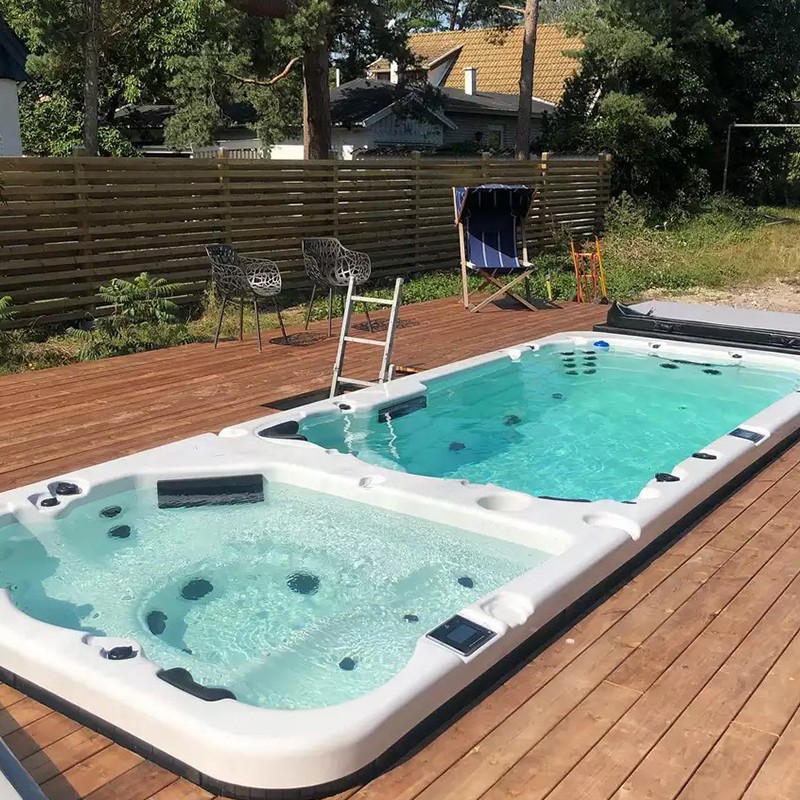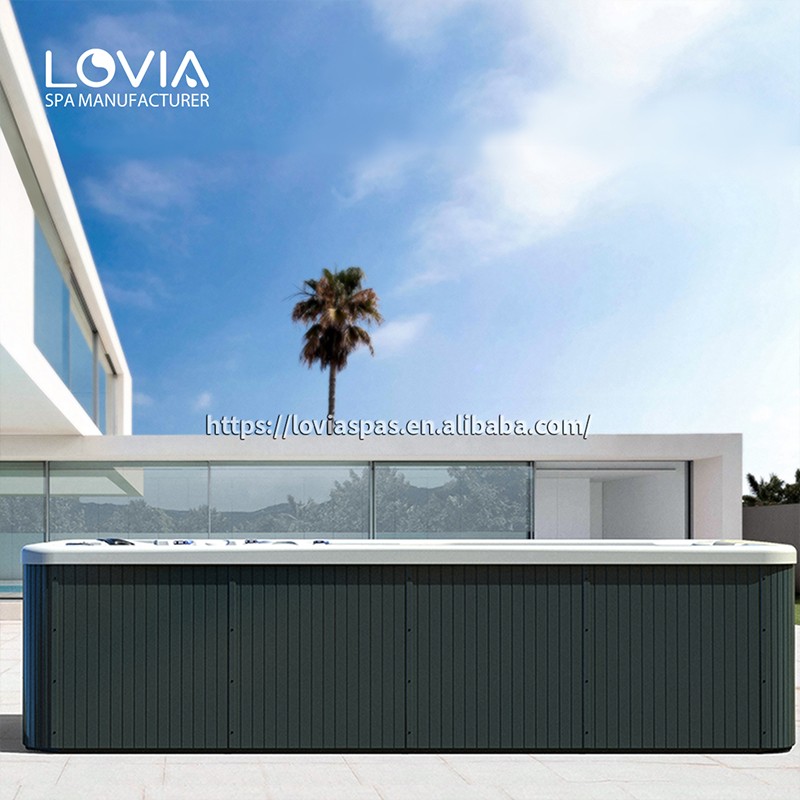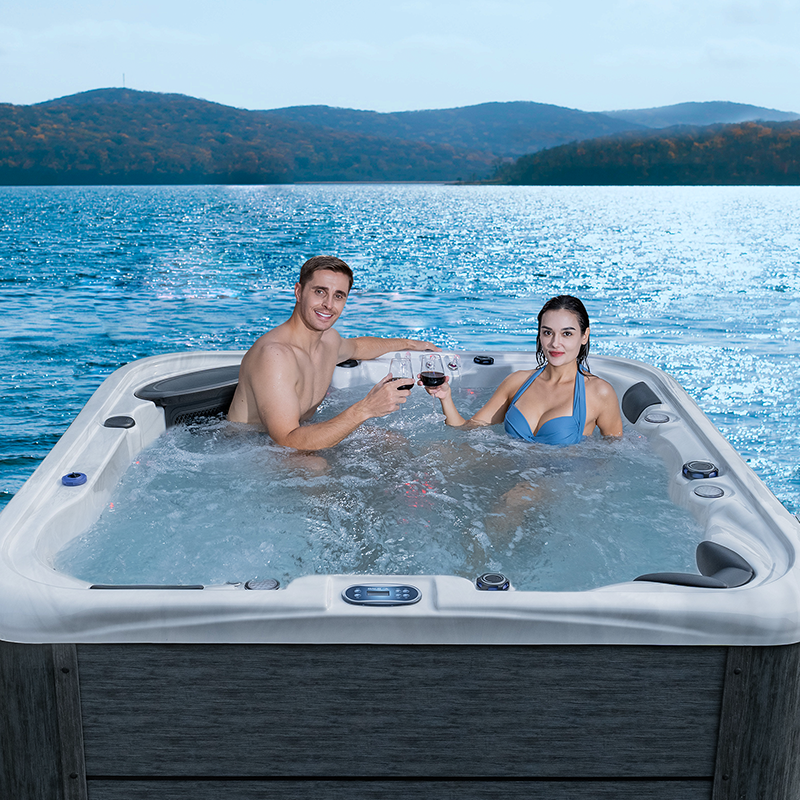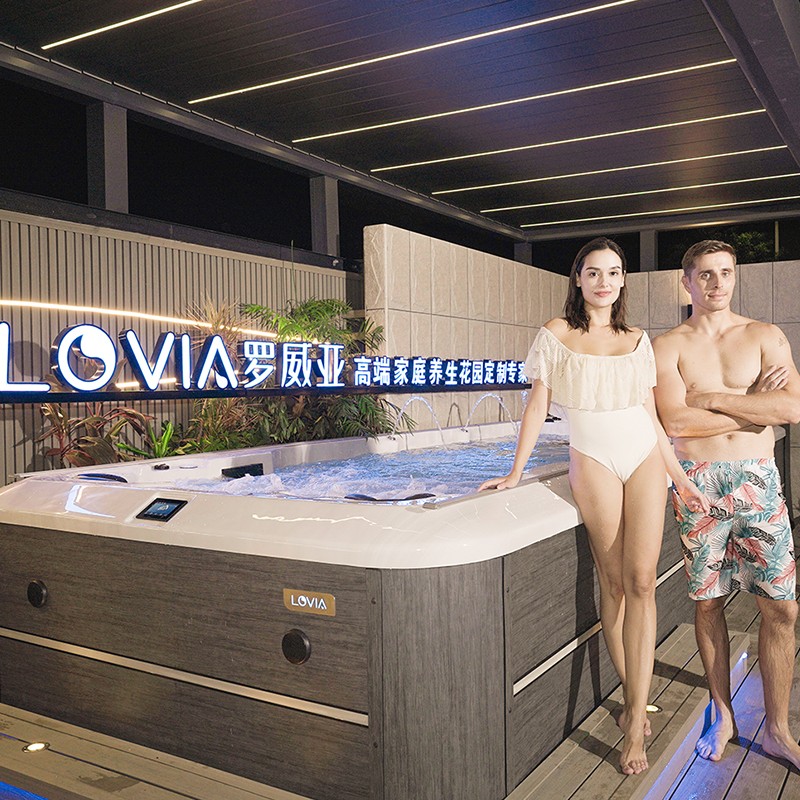
How often should the water in a Swim Spa be circulated?
2025-02-24 15:30Swim Spa is a very popular fitness, relaxation and entertainment facility in modern families. It combines the functions of a swimming pool and a spa, which can not only provide full-body exercise but also warm hydrotherapy massage. However, the water quality maintenance of Swim Spa is a key issue in its use, especially the water circulation frequency is crucial to keep the water clean and healthy. So, how often should the water in Swim Spa be circulated? This is the core question that every Swim Spa user needs to know.
In this news, we will explore in detail the working principle of Swim Spa water circulation, the factors affecting the water circulation frequency, the recommended water circulation time, and how to ensure the long-term healthy maintenance of water quality. Through scientific water circulation management, users can not only extend the service life of Swim Spa equipment, but also protect the health and safety of family and friends.

What is the role of Swim Spa water circulation?
Water circulation is a key step in maintaining water quality in Swim Spa. It draws water out of the spa pool through the filtration system, cleans it through the filter, and then re-injects it into the pool. During the whole process, impurities, bacteria and other pollutants in the water will be effectively removed to ensure the cleanliness and hygiene of the water.
The role of Swim Spa water circulation is:
1.1 Remove impurities in water
1.2 Remove microorganisms and bacteria
1.3 Maintain chemical balance
1.4 Maintain uniform water temperature
1.1 Remove impurities in water
When the water in the Swim Spa is exposed to the air, it will inevitably be affected by external pollutants, such as dust, leaves, insects, etc. Even when used indoors, the human body will bring some impurities, such as dandruff, hair, sweat, skin care product residues, etc. Through the water circulation system, these visible pollutants can be captured and removed by the filter.
1.2 Remove microorganisms and bacteria
Microorganisms and bacteria in water are also hidden dangers that affect water quality. Without effective water circulation and disinfection measures, bacteria, viruses and other microorganisms will multiply rapidly in warm water, increasing the health risks of users contracting skin diseases, respiratory diseases, etc. Through continuous water circulation, combined with the use of chemical disinfectants, microorganisms in the water can be controlled and eliminated.
1.3 Maintain chemical balance
Common chemicals used in Swim Spas, such as chlorine, bromine, and pH regulators, need to be evenly distributed in the water to achieve the best disinfection effect. The role of water circulation is to ensure that the chemicals are evenly distributed throughout the pool by constantly mixing the water body, maintaining the chemical balance of the water. Even chemical distribution helps prevent unstable water quality, such as high or low pH values, turbid water, and other problems.
1.4 Maintain uniform water temperature
The water temperature in a Swim Spa is usually set within a comfortable range. Whether it is for fitness or hydrotherapy purposes, the uniformity of water temperature is crucial. Water circulation can help maintain a uniform temperature throughout the water body to avoid local overheating or overcooling.

What factors determine the frequency of water circulation in a Swim Spa?
There is no fixed standard for the frequency of water circulation in a Swim Spa, but it is affected by many factors. Understanding these factors can help users scientifically adjust the circulation time to ensure the best water quality.
The frequency of water circulation in a swim spa depends on:
2.1 Swim spa capacity
2.2 Frequency of use
2.3 Environmental factors
2.4 Chemical balance of water quality
2.5 Power of the water pump
2.1 Swim spa capacity
Different models of swim spas have different water capacities. Generally speaking, the larger the capacity of a swim spa, the longer it takes to complete a water circulation. For example, a 1500 liter swim spa may take 2-4 hours to circulate, while a larger device, such as a swim spa with an 8000 liter water capacity, may take 6 hours or even longer to complete a cycle.
2.2 Frequency of use
The frequency of use of a swim spa is another important factor in determining the frequency of water circulation. Frequent use of a swim spa means more pollutants enter the water and the chemical balance in the water is more likely to be disrupted. Therefore, if the swim spa is used every day, it is recommended to increase the number and time of water circulation to ensure that the water quality is not affected.
● High-frequency use: If the Swim Spa is used multiple times almost every day, it is recommended to perform 2-3 complete water cycles per day to ensure that the water quality remains clean.
● Occasional use: If the Swim Spa is only used once or twice a week, then 1 complete water cycle per day is sufficient, but even on days when it is not used, it is recommended to let the water circulate at least once to keep it clean.
2.3 Environmental factors
The environment in which the Swim Spa is located will also affect the frequency of water circulation. Outdoor Swim Spas are more susceptible to external pollutants such as leaves, dust, insects, etc. than indoor ones. Therefore, outdoor Swim Spas usually need to circulate the water more frequently.
● Outdoor environment: If the Swim Spa is placed outdoors, especially when it is not covered or there are plants nearby, it is recommended to increase the water circulation by 1-2 times a day to deal with more external pollutants.
● Indoor environment: Indoor Swim Spas are less affected by external pollutants, and 1-2 water cycles per day can keep the water quality clean.
2.4 Chemical Balance of Water Quality
The chemical balance of swim spa water, such as the amount of chlorine and bromine, and the pH value, needs to be maintained by circulating the water. If the chemical content of the water fluctuates greatly, the frequency of circulation may need to be increased. For example, when the pH of the water is high, circulation can help evenly distribute the pH adjuster as quickly as possible and restore the chemical balance of the water quality.
2.5 Power of the Water Pump
The power of the swim spa pump determines the speed of water circulation. Generally speaking, equipment with higher pump power can complete a water circulation in a shorter time. Users can estimate the circulation time based on the specifications of the water pump and refer to the manufacturer's recommended value to ensure that each circulation time is long enough.

How long is the water circulation time of the swim spa?
Based on the capacity of the swim spa, the frequency of use, and the environmental conditions, the following are some recommended water circulation times.
3.1 Water circulation time recommendations for swim spas
In general, the swim spa should be fully circulated at least once a day, and each circulation time should be 6-12 hours to ensure that all water is filtered and processed.
● Small and medium-sized Swim Spas (1500-3000 liters): It is recommended to circulate at least 1-2 times a day, each time for 4-6 hours.
● Large Swim Spas (capacity over 5000 liters): It is recommended to circulate at least 1 time a day, each time for 6-12 hours, depending on usage.
3.2 Continuous circulation mode of water circulation in Swim Spa
Some high-end Swim Spa equipment is equipped with a continuous circulation mode, which allows users to run the water pump 24 hours a day. This mode can continuously maintain the best water quality and is suitable for frequent use in homes or complex outdoor environments. However, continuous circulation will also increase energy consumption. It is recommended that users choose whether to turn on this function according to their own situation.
3.3 Energy-saving mode of water circulation in Swim Spa
The energy-saving mode of Swim Spa usually reduces the frequency of water circulation during non-use periods. For example, at night or during periods of less use, the device will automatically reduce the circulation time to save energy. Nevertheless, even in energy-saving mode, it is still recommended to perform at least one complete water circulation per day to ensure the cleanliness of the water quality.
How to monitor and maintain the water circulation in your Swim Spa?
In order to ensure that the water quality of your Swim Spa remains healthy for a long time, in addition to setting a reasonable water circulation time, users also need to regularly monitor water quality and maintain the equipment.
4.1 Regularly test water quality
Users can use commercially available water quality testing kits to regularly test the chlorine or bromine content, pH value, and total alkalinity in your Swim Spa. These data can help users determine whether the water quality is within the normal range and adjust the circulation time or the amount of chemicals added based on the test results.
4.2 Cleaning and replacing filters
The filter is the core component of the Swim Spa water circulation system, which is responsible for intercepting impurities and contaminants in the water. To ensure the efficient operation of the filter, users should clean the filter every two weeks and replace it with a new filter every 3-6 months according to the equipment manufacturer's recommendations.
4.3 Check the water pump and pipes
The water pump is the power source for maintaining water circulation, and the pipes are responsible for sucking water from the pool and re-injecting it. Users should regularly check the working status of the water pump and whether the pipes are blocked or leaking. If the water pump efficiency decreases, the water circulation time may need to be extended.

What are the possible consequences of improper water circulation in a Swim Spa?
If the water circulation in a Swim Spa is not frequent enough or the time is insufficient, the water quality will deteriorate rapidly, which may lead to the following problems:
5.1 Turbid water quality
Inadequate water circulation will cause uneven distribution of impurities and chemicals in the water, and the water quality will become turbid, affecting the user experience and the appearance of the equipment.
5.2 Bacterial breeding
Poor water circulation will create conditions for the growth of bacteria and microorganisms. Bacteria in the water will multiply rapidly, increasing the risk of users contracting skin diseases or other health problems.
5.3 Chemical imbalance
When water circulation is insufficient, the chemical balance in the water will be disrupted, resulting in too high or too low pH values, uneven concentrations of chlorine or bromine, and thus affecting the disinfection effect of the water quality.
Choose Guangzhou HuanTong Industrial for the best spa products. Since 1989, we have been providing high-quality outdoor spas, including acrylic, wooden, and swim spas. Our products are designed to offer exceptional comfort, durability, and performance, all while maintaining the highest safety standards. With certifications such as CE, ETL, and ISO9001, we ensure that every product meets global quality requirements. We offer competitive pricing, bulk purchase discounts, and custom design options for our clients. Contact us to learn more about our promotional offers and place your bulk order today.
